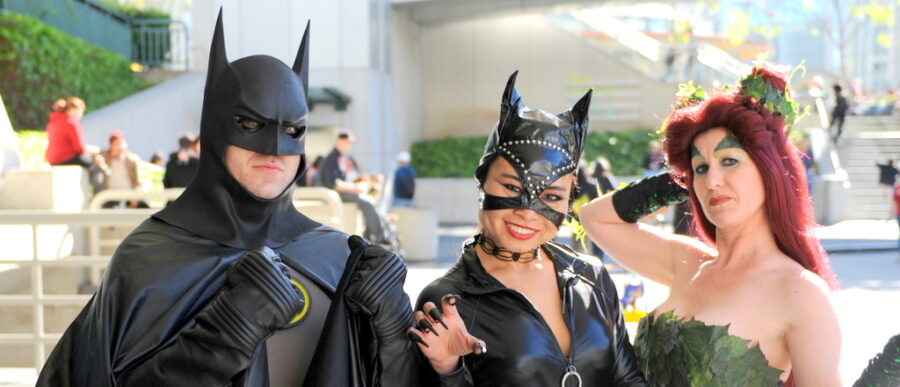Popular culture has always had its devoted fans. In the years between World War I and World War II, movie buffs devoured Hollywood fan magazines. In the 1960s, the rise of youth culture fueled the growth of rock ‘n’ roll along with the rise of an independent cinema infused with a counterculture spirit.
This week, more than 125,000 fans of comic books, cult TV shows, and science fiction and fantasy films will descend on San Diego for the event of the year in nerd culture: San Diego Comic-Con.
Many of those attending Comic-Con sport costumes to celebrate their favorite superhero (or villain). They might be fans of Rorschach (the deranged vigilante from the Watchmen comic book series) or Browncoats (followers of Joss Whedon’s defunct TV series Firefly), or any of numerous other characters both famous and obscure. For many attendees, the more arcane the better: It’s more meaningful when their attire speaks to a small, cultish group and bestows membership in a special society.
In the book Comic Book Nation, author Bradford W. Wright points out that it was in the 1970s that comic book fan culture evolved from a hodgepodge of individual efforts to become “a cottage industry in and of itself” with the rise of Comic-Cons and professionally-produced “fanzines.” Wright sees this as a reflection of the unsettled cultural climate. He writes: “The upheavals of the 1960s and early 1970s destroyed much of the social and cultural framework upon which American assumptions had long rested. The Cold War consensus lay in tatters. Cynicism, skepticism, and outright hostility towards authority of all kinds undermined respect for the government, corporations and other centers of power.”
Sound familiar? The same could be said of the polarized political environment and divisive culture wars of our own time. So it is perhaps not surprising that comic books, science fiction and the entire realm of “nerd culture” is on the rise.
The 10 highest grossing movies of all time include the science fiction film Avatar, the Batman saga The Dark Knight and two Harry Potter titles. This past weekend, the final entry in the Harry Potter movie franchise, Harry Potter and the Deathly Hallows, Part 2, toppled box office records. On television, shows celebrating geek culture like Big Bang Theory consistently draw loyal audiences. Fans are already camped out to get a choice seat for the opening session in the San Diego Convention Center’s cavernous Hall H: The Comic-Con panel on The Twilight Saga: Breaking Dawn Part 1, on Thursday at 11:15 AM. Science fiction and fantasy themes are increasingly prevalent throughout popular entertainment. The nerd culture underground is going mainstream.
We’ve seen this before, of course. The rebellious rock-n-roll music of the late 1960s became “classic rock” and now plays, Muzak-like, as background music in luxury automobile dealerships. Once edgy indie filmmakers now get deals with major studios to mount big budget productions.
Yet this, in turn, creates the opportunity for a new generation of cult phenomena to surface. After all, it was the broad adoption of classic rock ‘n’ roll that spawned the explosion of punk rock in the 1980s, and the grunge movement in the 1990s.
Underground movements continually evolve, exploring the edges of art to create something new and unusual. As fringe culture becomes mainstream, artists and fans seek out alternate creative avenues and give rise to a new avant-garde. At Comic-Con, in the smaller meeting rooms, away from the blockbuster panels in Hall H and the other the huge auditoriums, the next pop culture trends are likely to emerge.
The author of this post, Kendall Whitehouse, is new media editor at Wharton and contributing editor for technology and media at Knowledge at Wharton.



